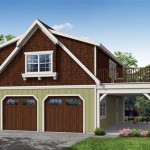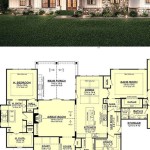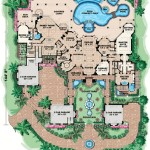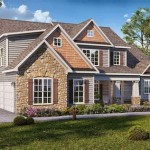Deck and Screened Porch Plans: Considerations for Design and Construction
The integration of outdoor living spaces into residential properties has become increasingly popular, with decks and screened porches representing significant investments in homeowner value and lifestyle. Careful planning is crucial before embarking on such projects. This article explores key considerations for deck and screened porch plans, encompassing design, materials, structural integrity, and regulatory compliance.
I. Defining the Purpose and Scope of the Outdoor Space
The initial stage of planning involves defining the intended purpose of the deck or screened porch. This determination will inform subsequent design choices, material selection, and overall size considerations. A deck primarily intended for grilling and outdoor dining will necessitate different design elements compared to one designed for relaxation and lounging. Similarly, a screened porch intended as an outdoor office will require electrical outlets and considerations for weather protection that differ from a simple leisure space.
Consider the following questions to clarify the project's scope:
What activities will primarily take place in this space? (e.g., dining, entertaining, relaxing, working)
How many people will typically use the space at once?
What level of weather protection is desired? (e.g., full screening, partial covering, open-air)
What is the adjacent indoor space? How will the deck or porch connect to the home's interior?
Addressing these questions early on will ensure that the final design meets the homeowner's specific needs and expectations.
II. Design Considerations: Aesthetics, Functionality, and Integration
The design phase is critical for achieving a harmonious integration of the outdoor space with the existing home architecture and landscape. Aesthetic considerations include the deck's or porch's style (e.g., contemporary, traditional, rustic), its overall shape and dimensions, and the choice of materials. Functionality considerations encompass traffic flow, accessibility, and the incorporation of features such as built-in seating, storage, or outdoor kitchens.
Key design elements to consider include:
Size and Shape: The size of the deck or porch needs to be proportionate to the house and the surrounding yard. Consider the available space and how the structure will impact natural light reaching interior windows. The shape should complement the architectural style of the home. Angular designs can add a modern touch, while curved edges can create a softer, more inviting feel.
Location and Orientation: The location of the deck or porch should maximize views and minimize exposure to harsh weather conditions. Orientation towards the sun or prevailing winds will impact the comfort level of the space. Consider the placement of trees and other landscaping elements to provide shade and privacy.
Access and Entry Points: Multiple access points can improve traffic flow and make the space more accessible. Consider adding stairs, ramps, or sliding glass doors to seamlessly connect the deck or porch to the home's interior and the surrounding yard.
Railing and Screening Options: Railing design significantly impacts the overall aesthetic of the deck. Options range from traditional wood railings to modern metal railings. Screening options for porches include various mesh types, allowing for varying degrees of visibility and insect protection. Consider the aesthetic impact of these features on the overall design.
Lighting and Electrical Considerations: Adequate lighting is essential for creating a functional and inviting outdoor space, especially for evening use. Consider adding recessed lighting, string lights, or landscape lighting to enhance ambiance and improve visibility. Electrical outlets are necessary for powering appliances, electronics, and outdoor lighting fixtures. Ensure that all electrical work is performed by a qualified electrician and complies with local codes.
III. Material Selection: Durability, Maintenance, and Cost
The choice of materials is a crucial factor in determining the longevity, maintenance requirements, and overall cost of a deck or screened porch. Common decking materials include wood (e.g., pressure-treated lumber, cedar, redwood, exotic hardwoods), composite decking, and PVC decking. Screening materials include aluminum, fiberglass, and vinyl.
Each material offers different advantages and disadvantages:
Wood: Wood offers a natural aesthetic and is relatively affordable compared to other materials. However, wood decks require regular maintenance, including staining or sealing, to prevent rot, decay, and insect infestation. Pressure-treated lumber is a cost-effective option, but it may contain chemicals that some homeowners prefer to avoid. Cedar and redwood are naturally resistant to decay and insects but are more expensive than pressure-treated lumber. Exotic hardwoods offer exceptional durability and beauty but are the most expensive wood option.
Composite Decking: Composite decking is made from a combination of wood fibers and plastic. It is more expensive than pressure-treated lumber but requires less maintenance. Composite decking is resistant to rot, decay, and insect infestation and does not need to be stained or sealed. However, some composite decking products can fade or scratch over time.
PVC Decking: PVC decking is made entirely of plastic. It is the most expensive decking material but offers the most durability and requires the least maintenance. PVC decking is resistant to rot, decay, insect infestation, fading, and scratching. It is also easy to clean.
Screening Materials: Aluminum screening is durable and long-lasting but can dent easily. Fiberglass screening is more flexible and resistant to tearing but may not be as durable as aluminum. Vinyl screening is a cost-effective option but may not be as aesthetically pleasing as other materials. Consider the visibility and airflow characteristics of different screening materials when making a selection.
Consider the long-term cost of ownership when selecting materials. While some materials may have a higher initial cost, they may require less maintenance and last longer, resulting in lower overall costs over the lifespan of the deck or porch.
IV. Structural Considerations: Load-Bearing Capacity and Code Compliance
The structural integrity of a deck or screened porch is paramount to ensure its safety and longevity. Proper planning and construction are essential to meet building codes and prevent structural failures. A licensed structural engineer or experienced contractor should be consulted to determine the appropriate load-bearing capacity of the deck or porch and to ensure that the structure is properly supported.
Key structural considerations include:
Footings: Footings are the foundation of the deck or porch and must be properly sized and constructed to support the weight of the structure and its occupants. The size and depth of the footings will depend on the soil conditions, the size of the deck or porch, and the local building codes. Consult with a local building inspector to determine the specific requirements for footings in your area.
Posts and Beams: Posts and beams provide vertical and horizontal support for the deck or porch. They must be properly sized and spaced to withstand the loads placed upon them. The size and spacing of the posts and beams will depend on the size of the deck or porch, the type of decking material used, and the local building codes.
Joists: Joists are the horizontal members that support the decking. They must be properly spaced and sized to prevent sagging or deflection. The spacing of the joists will depend on the type of decking material used and the local building codes.
Railing and Staircase Support: Railings and staircases must be securely attached to the deck structure to prevent falls. Railings should be at least 36 inches high and have balusters spaced no more than 4 inches apart. Staircases should have a maximum rise of 8 inches and a minimum tread depth of 9 inches. Handrails should be provided on both sides of the staircase.
Compliance with local building codes is essential for ensuring the safety and legality of the deck or porch. Building codes vary from jurisdiction to jurisdiction, so it is important to consult with a local building inspector to determine the specific requirements for your project. Failure to comply with building codes can result in fines, delays, and even the demolition of the structure.
V. Regulatory Compliance: Permits and Inspections
Obtaining the necessary permits and inspections is a critical step in the planning process. Building permits ensure that the proposed construction meets local building codes and regulations, safeguarding the property owner and the community. Inspections are conducted at various stages of construction to verify compliance with the permitted plans and applicable codes.
The permit application process typically involves submitting detailed plans and specifications to the local building department. The plans should include site plans, elevation drawings, and structural details. The building department will review the plans to ensure that they comply with all applicable codes and regulations.
Typical inspections include:
Footing Inspection: Verifies the proper size and depth of the footings before concrete is poured.
Framing Inspection: Ensures that the framing is properly constructed and meets code requirements.
Electrical Inspection: Confirms that electrical wiring and fixtures are installed safely and correctly.
Final Inspection: Verifies that the entire project is completed in accordance with the approved plans and applicable codes.
Failure to obtain the necessary permits and inspections can result in fines, stop-work orders, and the forced removal of the structure. It is important to contact the local building department early in the planning process to determine the specific requirements for your project.
Ultimately, thorough planning, attention to detail, and adherence to building codes are essential for creating a safe, functional, and aesthetically pleasing deck or screened porch. Consulting with experienced professionals, such as architects, engineers, and contractors, can significantly improve the outcome of the project and ensure its long-term success.

How To Build A Screen Porch Construction Diy

Porch Plans Covered Find Your At Family Home

Three Season Screened Porch Deck Addition The Plan And Construction Making Lemonade

Learn How To Build A Screen Porch Onto An Existing Deck

Amazing Screened In Porch And Deck Design Ideas Decks

Designing The Perfect Screened Porch

Amazing Screened In Porch And Deck Design Ideas Decks

Porch Plans Covered Find Your At Family Home

How To Build A Screen Porch Construction Diy

Screened In Porch Plans To Build Or Modify








